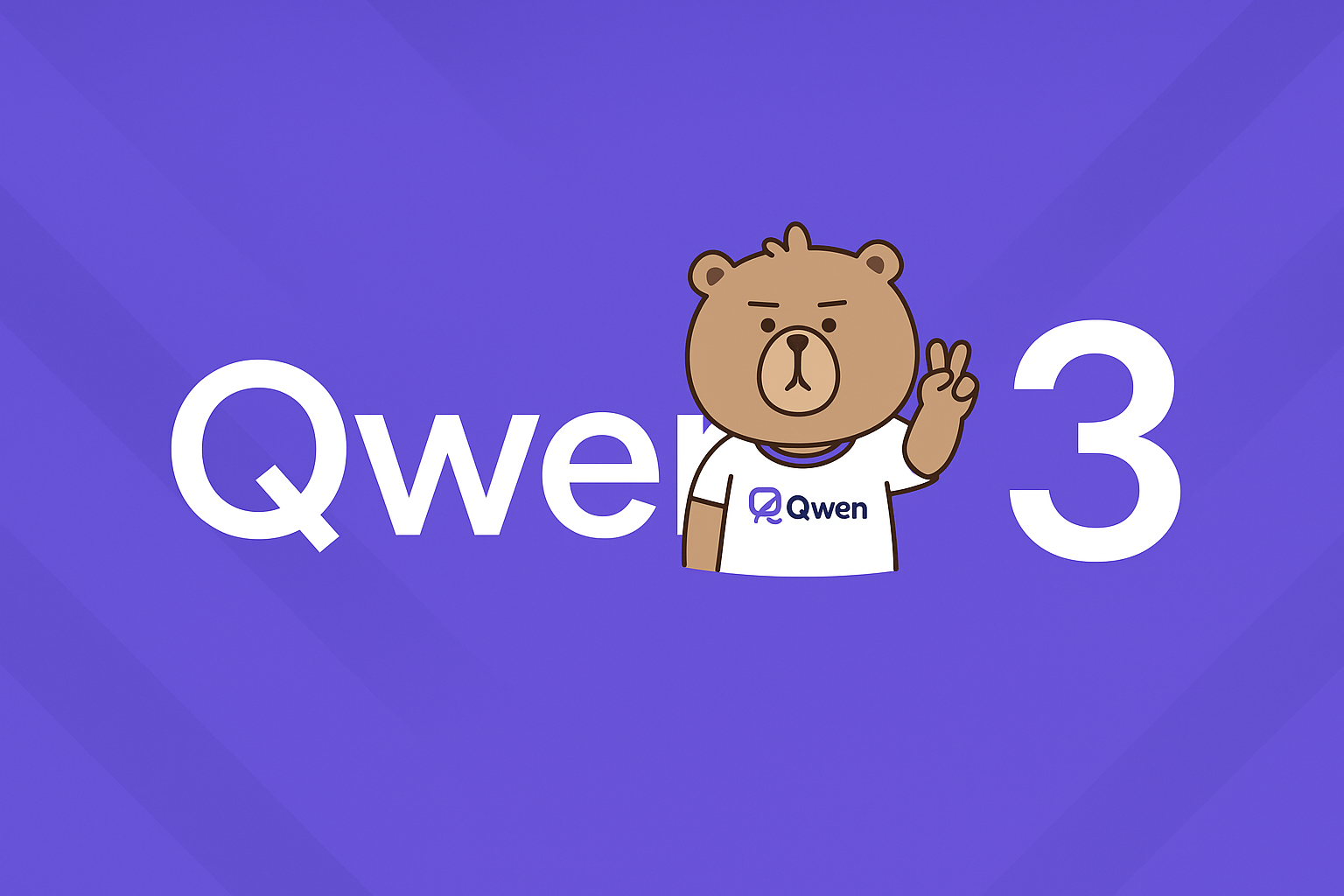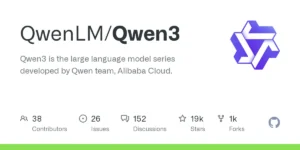Alibaba’s Qwen3-Next LLM — the new efficiency frontier
(A deep dive into what Qwen3-Next is, how it works, why it matters, and where it could take AI next)
Tl;dr: Alibaba’s Tongyi Qianwen team has released Qwen3-Next, a next-generation member of the Qwen family that prioritizes training & inference efficiency through a hybrid/sparse architecture: the model reportedly has an 80B parameter footprint while activating only ~3B parameters per token. That design delivers much lower training and serving costs, far higher inference throughput for very long contexts, and competitive reasoning ability — all of which make it a practical option for real-world, large-context applications. Alizila+1
1) Where Qwen3-Next fits in the Qwen lineage (short history)
Alibaba’s Qwen (Tongyi Qianwen) family has been iteratively expanding its capabilities across scale, modalities and context length. Qwen3 (released earlier in 2025) introduced a broad family of dense and sparse models with very large context windows and strong multilingual coverage. Qwen3-Next represents the next step — an architecture re-engineered around efficiency at scale, targeted at applications that need both long context understanding and economical inference. Wikipedia+1
2) What Qwen3-Next claims to be (headline features)
-
Large parameter footprint with small active set: The flagship variant is reported as an 80B-parameter model that typically activates ~3B parameters per token, leveraging sparsity/MoE techniques to reduce computation during inference. Hugging Face+1
-
Much lower cost / higher throughput: Alibaba’s materials and independent reporting claim up to 10× inference throughput and building/serving at roughly 1/10th the cost compared with some prior Qwen3 variants. That’s the core efficiency promise. Hugging Face+1
-
Long-context optimization: Qwen3-Next is engineered to handle very long context windows (tens to hundreds of thousands of tokens in some configurations), making it suitable for tasks like multi-document reasoning, book-length summarization, or legal contract analysis. together.ai+1
-
Reasoning mode / “Thinking”: The model family continues Alibaba’s emphasis on explicit reasoning modes (sometimes branded as “Thinking”), which aim to improve step-by-step chain-of-thought style outputs for complex tasks. Hugging Face
These claims are supported by Alibaba’s research/blog posts and independent reporting from several outlets. The combination — big parameter budget + small active set + long context — is the defining technical angle of Qwen3-Next. Alizila+1
3) How the architecture achieves those efficiency gains (high-level explanation)
Qwen3-Next uses a hybrid approach that mixes the benefits of very large parameter counts with conditional activation:
-
Sparse / Mixture-of-Experts (MoE) style routing: Instead of running every parameter for each token, Qwen3-Next routes tokens to a subset of “experts”. That lets the model keep a huge representational capacity without paying the full compute cost on every forward pass. The result: an 80B global parameter budget, but only ~3B active parameters per token. Venturebeat+1
-
Efficient training & inference pipelines: The team paired architectural innovations with system-level optimizations (better parallelism, memory-efficient kernels, and inference quantization/compilation paths). Together these reduce the wall-clock cost to train and speed up throughput for long-context runs. Independent writeups and the Qwen model pages emphasize the combination of model + infra improvements. Hugging Face+1
-
Long-context engineering: Handling 100K+ tokens without linear slowdowns requires attention and positional encoding innovations (chunking, sliding windows, or sparse attention patterns). While Alibaba hasn’t published every low-level trick publicly, the product pages and third-party hosts list very large supported context lengths and benchmarking that support the claim. together.ai+1
4) Performance: what the numbers suggest
Several sources report similar headline numbers — an 80B parameter model that activates 3B at inference, with ~10× inference throughput improvements and major cost reductions compared with previous Qwen3 variants. Hugging Face model pages, vendor listings, and tech press summaries all highlight these figures; independent outlets (SCMP, VentureBeat) corroborate performance/cost claims in lay terms. These numbers point to a model designed to provide near-state-of-the-art performance while being far cheaper to run for large workloads. Hugging Face+2South China Morning Post+2
Important note about benchmarks: benchmark numbers reported by model providers should be read cautiously — real-world performance varies by task, data, quantization, and deployment stack. Third-party evaluations and open benchmarks (where available) will be useful to validate the claims across a variety of tasks (code, math, reasoning, long-context QA, etc.).
5) Practical applications — who benefits most?
The Qwen3-Next efficiency + long-context combination enables several high-value use cases:
-
Legal, compliance, and finance: analyzing and summarizing very long contracts, prospectuses, regulatory filings or multi-document casebooks where context spans thousands of pages.
-
Enterprise knowledge and search: vector stores plus a long-context LLM that can ingest entire manuals, product histories, or support transcripts and answer with full context.
-
Multi-document summarization & RAG (retrieval-augmented generation): larger active context reduces the need for aggressive retrieval chunking and allows more coherent cross-document reasoning.
-
Large codebases and software engineering: code understanding across whole repositories, or generating architecture-level changes that need awareness of many files.
-
Healthcare research / scientific literature review: compressing and synthesizing findings across extensive corpora while preserving linkages between studies.
Because Qwen3-Next promises lower serving costs, these enterprise classes — which were previously gated by compute expense — become far more viable to productize.
6) Licensing, openness, and accessibility
Alibaba’s Qwen family has taken a relatively open stance compared with many Western providers: previous Qwen3 variants were released under permissive licenses (Apache 2.0 in many cases) and made available on platforms like Hugging Face and ModelScope. Qwen3-Next model artifacts, weights, or hosted endpoints are already appearing on public model hubs and commercial providers, indicating a continued mix of open downloads and cloud-hosted paid APIs. That mix accelerates experimentation while also allowing managed, production-grade endpoints for companies that prefer not to self-host. Wikipedia+1
7) Implications for the AI ecosystem
-
Lowered barrier to large-context AI: If the cost and latency improvements hold across real deployments, many enterprises will move from narrow retrieval + small LLMs toward fewer, larger context runs — changing architecture patterns for retrieval, caching and prompt engineering.
-
Competition on efficiency, not only scale: The industry race is shifting: raw parameter counts are no longer the only metric. Efficient architectures that deliver performance per compute dollar will shape commercial adoption and could reset expectations for “what you need” to run advanced agents.
-
Hardware & systems pressure: New sparse/MoE-heavy models force continued innovation in inference runtimes, compilers, and accelerator support (GPUs, IPUs, custom chips). The gains on paper require supporting software ecosystems to fully materialize.
-
Open model dynamics: Widely available efficient models accelerate downstream innovation (startups, research), but also raise content moderation, safety, and competition questions (who controls fine-tuned variants, datasets and governance).
8) Safety, ethics, and governance concerns
Qwen3-Next’s accessibility and efficiency make it a powerful tool — and with that power come risks:
-
Misuse risk grows with cheap access: Lower costs mean more actors can run large-context models for automation (both helpful and harmful). Rapid, inexpensive generation at scale increases the need for robust safety layers.
-
Hallucination and provenance: Long-context reasoning can still hallucinate; for high-stakes domains (legal/medical/financial) it’s critical to provide provenance, chain-of-thought transparency, and guardrails.
-
Dual-use & regulation: As national regulators consider model audits, watermarking, or export controls, developers and deployers of Qwen3-Next must account for compliance — particularly across jurisdictions with divergent data and model regulations.
-
Bias & representation: Large multilingual models sometimes inherit biases from training corpora. Long-context power doesn’t eliminate bias; it can amplify it if not checked through evaluation and mitigation.
Alibaba and other large model providers typically publish safety guidelines and offer enterprise tooling to mitigate risks; responsible adopters should combine technical, policy and human-in-the-loop measures.
9) How to evaluate Qwen3-Next for your project (practical checklist)
If you’re thinking of adopting Qwen3-Next, evaluate along these axes:
-
Task fit: Does your task truly need long context or high reasoning fidelity? If not, a smaller dense model may be a better fit.
-
Latency & throughput targets: Test both cold and sustained loads — sparse routing can change latency profiles.
-
Cost modeling: Run cost simulations (training/ft + inference). The “10× faster / 1/10th cost” headline is promising, but real economics depend on your workload shape. Hugging Face+1
-
Safety & compliance: Map the data flow, PII risk, and auditability needs. Put human review on high-risk outputs.
-
Integration path: Decide between self-hosting (if offering open weights) vs managed endpoints on Alibaba Cloud or third-party platforms (which may simplify reliability and compliance). AlibabaCloud+1
10) Limitations & open questions
-
Reproducibility & independent benchmarks: Many claims come from provider posts and early press coverage. Independent, task-diverse benchmarks and community tests are needed to verify gains across domains.
-
Edge cases for sparsity: Sparse activation is powerful, but routing errors or expert imbalance can produce unpredictable failures on rare inputs. Engineering for robustness is critical.
-
Ecosystem maturity: For wide deployment, toolchains (quantization, memory mapping, monitoring) must catch up to fully exploit Qwen3-Next’s promises.
11) Final take: why Qwen3-Next matters
Qwen3-Next signals a pragmatic pivot in large model design: instead of only pushing parameter counts higher, vendors are optimizing efficiency per dollar and practical usability at scale. If the model’s efficiency and long-context capabilities hold up in independent evaluation, we should expect a shift in how enterprises build LLM-powered products — favoring fewer, stronger models that can ingest far larger contexts and run at production cost-points. That makes advanced, long-range reasoning features commercially accessible and could unlock new classes of applications across law, research, enterprise search, and more. Alizila+1
Selected sources and why they matter
-
Alibaba / Qwen blog & model pages — official product/research details and launch notes (primary source). Alizila+1
-
Hugging Face Qwen3-Next model card — concrete model variant details (parameters, activated params, throughput notes). Hugging Face
-
SCMP, VentureBeat, Reuters reporting — independent press coverage that summarizes vendor claims and places them in market context. South China Morning Post+2Venturebeat+2
-
Alibaba Cloud Model Studio & third-party host listings — information on context lengths, pricing and hosted availability. AlibabaCloud+1
For quick updates, follow our whatsapp channel –https://whatsapp.com/channel/0029VbAabEC11ulGy0ZwRi3j
https://bitsofall.com/https-yourblog-com-new-ai-crime-vectors-emerge/







